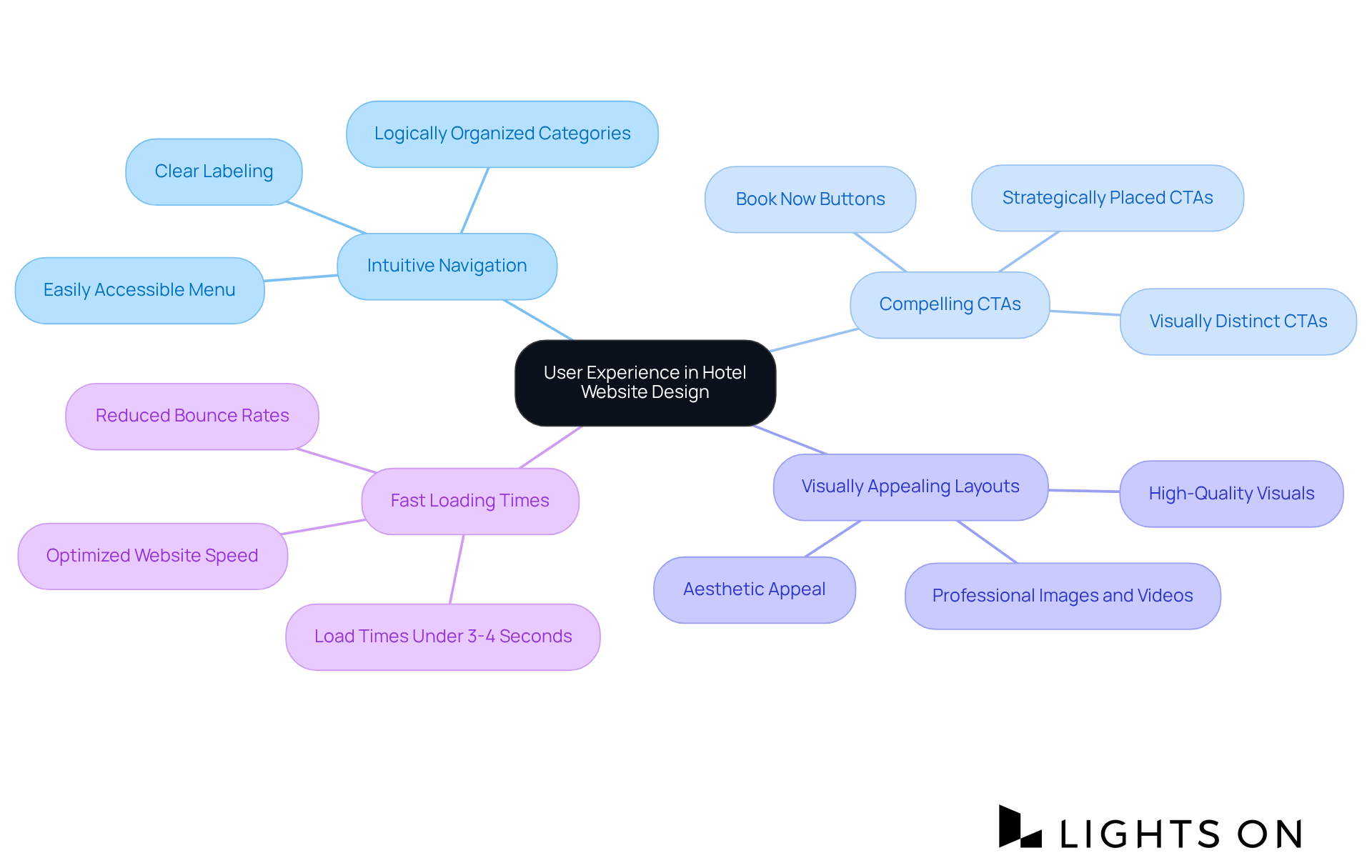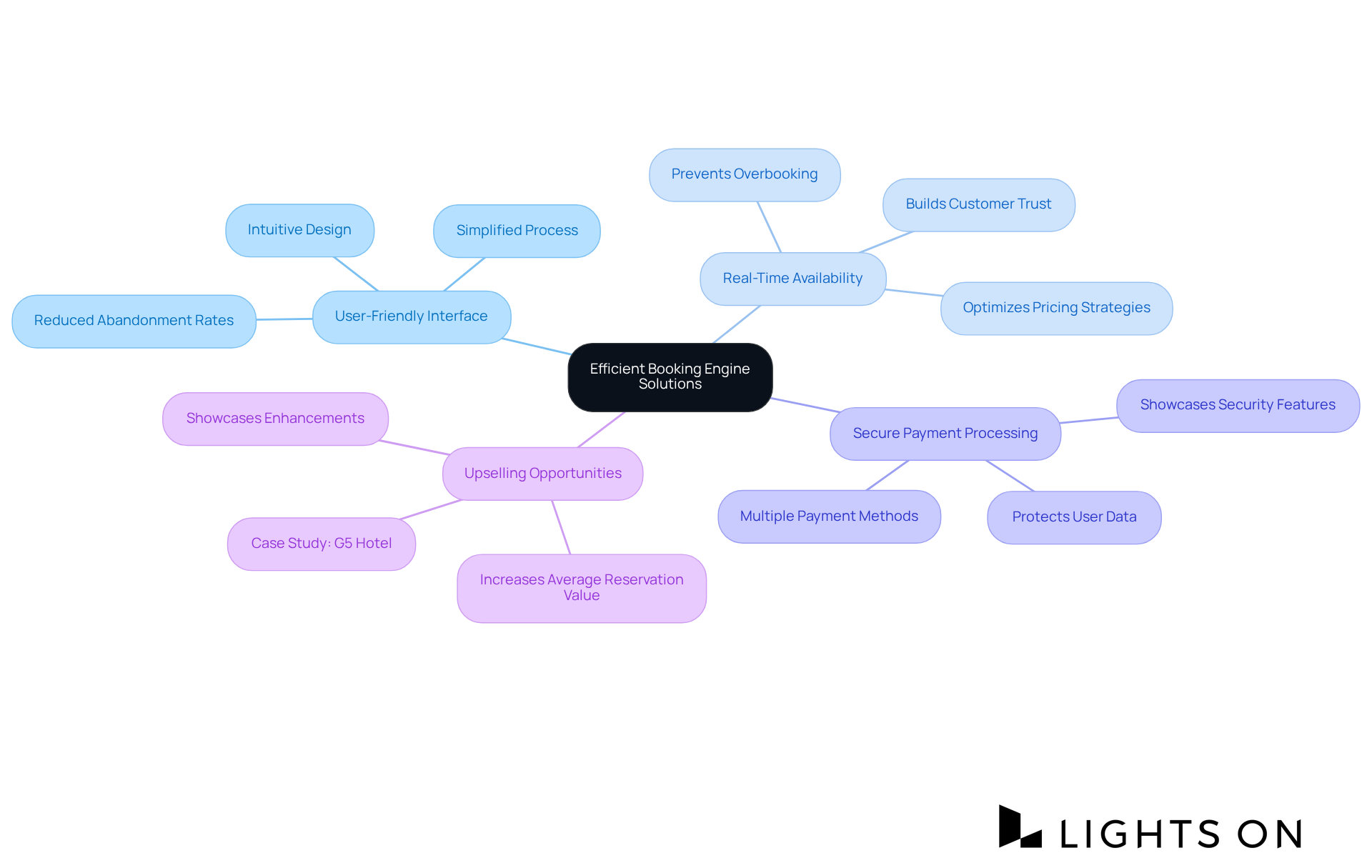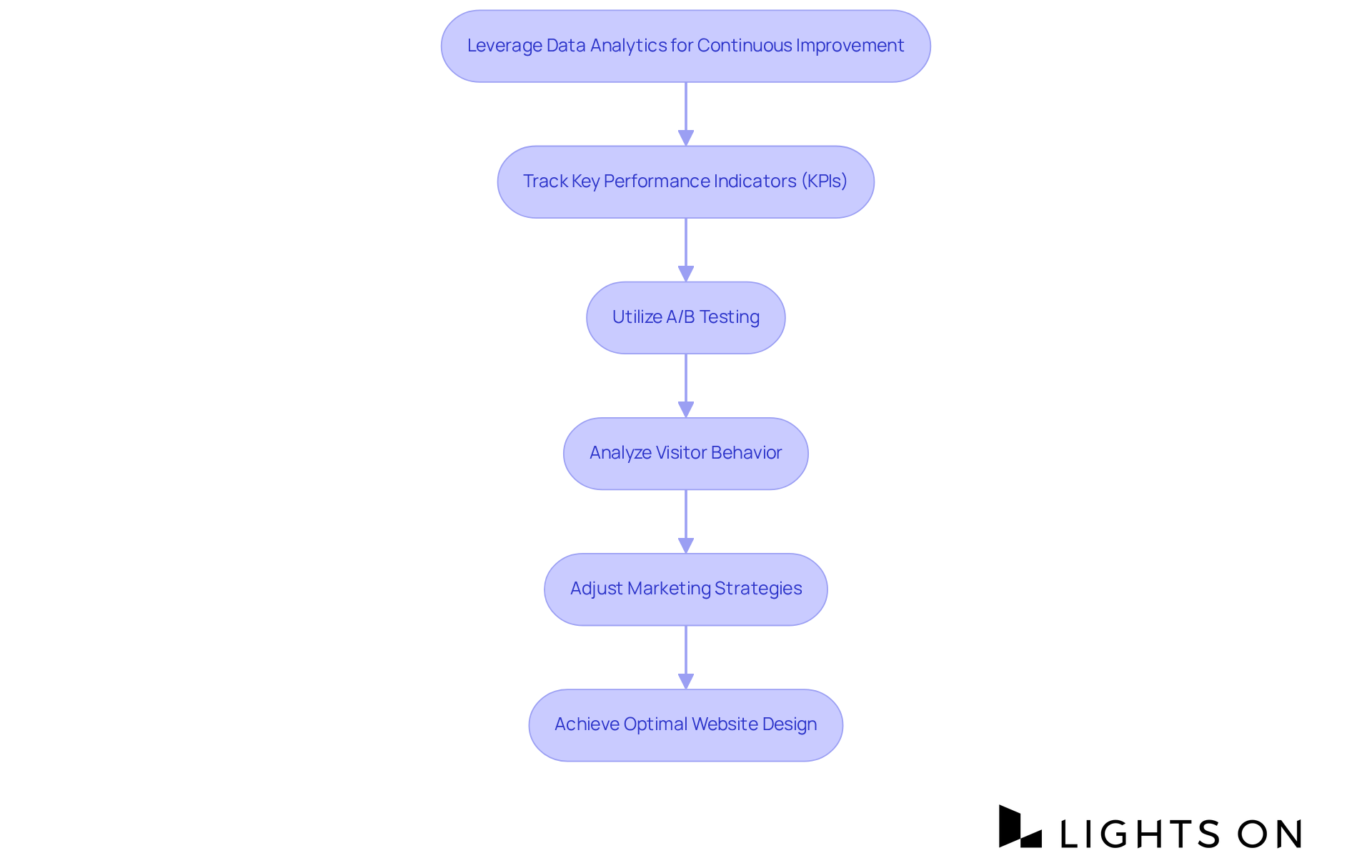To effectively boost revenue, hotels should adopt best website design practices that prioritize user experience. This begins with implementing mobile optimization strategies, which are crucial in today's digital landscape. Furthermore, integrating efficient booking engine solutions enhances the user journey, making it seamless and intuitive. Leveraging data analytics for continuous improvement allows hotels to refine their approach based on visitor behavior and preferences. These practices not only enhance visitor engagement but also significantly improve satisfaction. By focusing on intuitive navigation, responsive design, and user-friendly booking interfaces, hotels can drive increased direct bookings and ultimately foster revenue growth.
Creating an inviting online presence is essential for hotels seeking to boost their revenue in a competitive landscape. By applying best practices in website design, hotels can significantly improve user experience, streamline booking processes, and utilize data analytics for ongoing enhancement. However, the challenge lies in navigating the multitude of design elements that can either attract or repel potential guests.
What strategies can hotels implement to ensure their websites not only engage visitors but also convert them into loyal customers?
To enhance visitor experience, hotel websites must implement the best website design for hotel, which includes:
Simplified navigation is essential; the main navigation menu should be easily accessible and logically organized. Clearly labeled categories enable individuals to find information swiftly, serving as a helpful guide that avoids frustration.
Furthermore, compelling CTAs, such as 'Book Now' buttons, should direct individuals toward making reservations. These buttons must stand out visually and be strategically placed throughout the site to facilitate quick decisions.
In addition, incorporating high-quality visuals—professional images and videos that showcase the hotel’s amenities and atmosphere—not only enhances aesthetic appeal but also helps potential guests visualize their stay, building anticipation and trust.
Fast loading times are also crucial; optimizing website speed is necessary to reduce bounce rates. Data shows that slow-loading sites can irritate visitors, causing them to abandon their search for accommodations. Ideally, load times should be under three to four seconds to sustain audience engagement.
By prioritizing these user experience elements, accommodations can achieve the best website design for hotel, creating a more engaging online environment that encourages bookings and fosters customer loyalty.
Successful case studies demonstrate that even small changes in navigation can lead to significant increases in conversion rates, highlighting the necessity of the best website design for hotel. As noted by industry experts, intuitive navigation is essential for guiding potential guests through their journey, ultimately enhancing satisfaction and driving revenue.

To effectively implement mobile optimization, hotels should consider the following strategies:
Responsive Design: Ensure that the website adapts seamlessly to various screen sizes and orientations. Employing adaptable layouts and scalable images is vital for preserving quality on smaller displays. This is particularly important as handheld devices represented over 70% of global online travel traffic in 2024. Furthermore, smartphone reservations accounted for 37% of all travel sales and are expected to increase to 44% by 2029, underscoring the growing significance of optimization for hotels.
Quick Loading Times: Optimize images and reduce heavy scripts to improve loading durations on portable devices. Research indicates that websites loading longer than three seconds experience significantly higher bounce rates, making tools like Google PageSpeed Insights invaluable for identifying areas for improvement.
Touch-Friendly Navigation: Design buttons and links that are easy to tap, ensuring sufficient spacing to prevent accidental clicks. This method enhances usability for individuals on smartphones, as a tidy and straightforward design keeps visitors engaged and lowers bounce rates. It's also crucial to avoid confusing menus, as this can lead to frustration and increased bounce rates.
Streamlined Reservation Process: Simplify the reservation procedure for smartphone users by reducing the number of steps needed to finalize a reservation. Every additional step in the reservation process risks losing a customer, so implementing features like autofill for forms can accelerate the process, creating an ideal reservation journey that consists of just three to four steps. Accommodations that adopted the best website design for hotel, focusing on mobile-centric design principles, have seen almost 20% more reservations from smartphones, showcasing the success of these strategies.
By concentrating on these mobile optimization techniques, establishments can greatly enhance client satisfaction and boost direct reservations from mobile devices, positioning themselves for success in a competitive environment.

To successfully integrate an efficient booking engine, hotels must prioritize several key aspects that are crucial for enhancing the reservation experience.
User-Friendly Interface: A clean and intuitive interface is essential, enabling users to effortlessly select dates, room types, and additional services. A seamless reservation experience is crucial; studies indicate that over 80% of online travel arrangements are abandoned if the process feels too lengthy or perplexing. By simplifying this process, hotels can significantly reduce abandonment rates and improve customer satisfaction.
Real-Time Availability: The booking engine must reflect real-time availability to prevent overbooking and enhance customer trust. This feature not only builds confidence among potential guests but also ensures that hotels can manage their inventory effectively. Furthermore, real-time updates can help in optimizing pricing strategies based on current demand.
Secure Payment Processing: Implementing secure payment gateways is vital for protecting user data. Providing various payment methods accommodates different guest preferences, enhancing the reservation process to be more accessible and convenient. In addition, showcasing security features can reassure guests, further encouraging them to complete their bookings.
Upselling Opportunities: The reservation system should enable upselling, allowing lodgings to showcase room enhancements or exclusive packages during the reservation process. This strategy can significantly raise the average reservation value; for instance, properties like G5 Hotel & Serviced Apartment achieved a 50% increase in direct reservations after improving their reservation system. Such results highlight the potential benefits of a well-structured upselling approach.
By concentrating on these aspects, accommodations can implement the best website design for hotel reservations, resulting in a more effective and user-friendly experience that encourages direct bookings and enhances overall revenue. Are you ready to elevate your booking process and drive more direct reservations?

To effectively leverage data analytics, hotels must adopt best practices that drive results:
Track Key Performance Indicators (KPIs): Regularly monitoring essential metrics such as website traffic, conversion rates, and user engagement is crucial. These indicators offer valuable insights into the effectiveness of both the website and marketing initiatives, enabling informed decision-making.
Utilize A/B Testing: Implementing A/B testing on various website elements, including calls to action (CTAs), layouts, and content, allows accommodations to determine which variations resonate most with guests. This method results in enhanced conversion rates and a more tailored guest experience.
Analyze Visitor Behavior: Employing tools like Google Analytics provides an understanding of interactions on the website. By pinpointing drop-off points in the booking process and identifying areas for improvement, accommodations can streamline the guest experience, ultimately leading to higher satisfaction.
Adjust Marketing Strategies: Utilizing data insights to refine marketing campaigns is essential. Customizing messaging for specific demographics or modifying strategies based on individual behavior can significantly enhance engagement and conversion rates.
By consistently analyzing data and making strategic adjustments, hotels can achieve the best website design for hotel, strengthen their online presence, enhance user experience, and ultimately drive increased revenue.

Prioritizing user experience in hotel website design is crucial for enhancing visitor engagement and ultimately boosting revenue. By focusing on intuitive navigation, compelling calls to action, and high-quality visuals, hotels can create an online environment that not only attracts potential guests but also facilitates bookings. Furthermore, the integration of mobile optimization strategies amplifies this effect, ensuring that websites function seamlessly across devices, catering to the growing number of travelers booking on smartphones.
Key insights from this discussion highlight the importance of:
This data-driven approach leads to informed decisions that enhance user satisfaction and increase conversion rates.
In conclusion, adopting these best website design practices is not merely about aesthetics; it’s about creating a streamlined, user-friendly experience that drives revenue growth. Hotels that embrace these principles can position themselves competitively in the market, ensuring they meet the evolving expectations of travelers. By investing in user experience, mobile optimization, efficient booking solutions, and data analytics, hotels can significantly enhance their online presence and ultimately increase direct bookings.
What are the key elements of effective hotel website design?
The key elements include intuitive navigation, compelling calls to action (CTAs), visually appealing layouts, and fast loading times.
Why is intuitive navigation important for hotel websites?
Intuitive navigation is important because it allows visitors to easily access information through a logically organized main navigation menu, helping them find what they need quickly and reducing frustration.
What role do compelling calls to action (CTAs) play on hotel websites?
Compelling CTAs, such as 'Book Now' buttons, guide visitors toward making reservations. They should be visually distinct and strategically placed to facilitate quick decision-making.
How can high-quality visuals impact a hotel website?
High-quality visuals, including professional images and videos, enhance the aesthetic appeal of the website and help potential guests visualize their stay, building anticipation and trust.
What is the ideal loading time for a hotel website, and why is it important?
The ideal loading time is under three to four seconds. Fast loading times are crucial to reduce bounce rates, as slow-loading sites can frustrate visitors and lead them to abandon their search for accommodations.
How can prioritizing user experience elements affect hotel bookings?
By prioritizing user experience elements, hotels can create a more engaging online environment that encourages bookings and fosters customer loyalty. Successful case studies show that even small changes in navigation can significantly increase conversion rates.
What do industry experts say about intuitive navigation on hotel websites?
Industry experts emphasize that intuitive navigation is essential for guiding potential guests through their journey, ultimately enhancing satisfaction and driving revenue.
Transform your group booking strategies with Lights On and watch your occupancy soar.